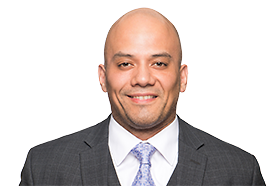Improve process and technology for better reporting and planning
The insurance industry generally isn’t seen as a leader in back-office technology investments. However, even with the uncertainty in the economic environment, many insurance companies are investing in new finance and accounting technologies as recent improvements in this technology have significantly advanced finance function capabilities.
This has led to modern accounting and finance processes and technology becoming “must-have” rather than “nice-to-have” for insurance companies. This especially holds true as many homegrown and historical technologies are reaching their end-of-life and may no longer be supported by software providers. Many insurance companies can benefit from:
- Automation of routine and repetitive tasks that can free up resource time for higher-value analysis and reduce the strain on busy finance staff.
- Advanced analytics and artificial intelligence that can transform finance departments with sophisticated, forward-looking strategic planning and continuous forecasting instead of point-in-time historical results and once-a-year budgets.
- Scalability to adapt to the growth of the organization (process more activity) without adding headcount.
- The potential to extend the life of existing technology infrastructure by leveraging low-code and no-code solutions along with the modular design of newer technologies.
Insurance companies that invest in finance modernization are able to enhance security; improve their data collection and analytics; integrate their technology stacks; and upgrade their core systems to provide better functionality across their organizations.

“Today there are better, nimbler, more cost-effective and fit-for-purpose [technology] options to consider. This has allowed insurance organizations to modernize at a pace their teams can adapt to.”
“Historically, accounting and finance departments looking to modernize their technology infrastructure were faced with yearslong and big efforts to implement a monolithic ERP. However, today there are nimbler, cost-effective and fit-for-purpose options to consider. This has allowed insurance organizations to modernize at a pace that their teams can adapt to.,” said Grant Thornton CFO Advisory Partner Bob Cummings.
Although technology requires an upfront expense, Grant Thornton CFO Advisory Partner Martin Ferrer said: “Technology investments typically have a significant impact on the company’s financials. Thus, planning, designing and change management are success factors for transformational change.”
Organizations should avoid the old mantra of investing in only people to fix problems. Today’s technology will help organizations perform tasks faster and more efficiently, with less risk of manual error.
Insurance companies are now investing in technology that provides more insights into business performance and an understanding of where investment dollars should be targeted. Technology can also help recruiting and retention by attracting younger workers who want to use more advanced tools, as younger workers want to avoid processing manual journal entries for the rest of their careers. Meanwhile, competitors are working to gain an advantage through their finance modernization, so insurance companies that ignore these opportunities do so at their own peril.
“The company’s business strategy should be a key component of the evaluation of the technology modernization, as the technology can be leveraged to enable the strategy in order to gain the greatest value from the investment,” said Grant Thornton Technology Modernization Managing Director Mike Pilch. “This positions the company for immediate and long-term success and to be able to adapt and scale for future changes.”
Start with strategy
Once insurance company leaders have decided to move forward with business transformation, Pilch said it’s wise for them to think about their business strategy in relation to two different questions:
- On the finance side, what processes can be changed to enable improved results in the future?
- On the technology side, how can new tools be used to create better outcomes?
“Evaluating the key issues and rationalizing existing processes is critical to determine the priorities and incremental value that can be obtained through a technology modernization,” Pilch said. “An implementation of technology for your organization will not fix key challenges without isolating the root cause of the issue and understanding the upstream and downstream impacts of change. Evaluating the modernization with a strategic lens to holistically understand the impact to controls, the tax provision, reporting, and other impacted areas is critical to ensuring that value is realized and the solution is adopted, and to reduce risk during the deployment.”
The past few years have brought about a need for insurance companies to adjust to an increasingly remote work environment, but change has come slowly in certain places. Processes that can be automated may still be manual, cloud technology may not be fully adopted as necessary, or the close process might not be as efficient as it should be.
One key action in finance modernization is evaluating where the company stands on a finance function maturity curve after a few years of significant change in the business environment. In some cases, Pilch said, technology for back-office systems supporting finance may be 20, 30 or even 40 years old. When this is the case, company leaders may need to dig deeply with a thorough review and possible upgrade of the quality of the data that is available to them.
Identifying your reporting requirements and what you’re trying to achieve helps you determine what data you need — and the steps you will need to take to get that data.
“Companies should consider framing up what’s achievable and what are the small steps that need to be done before you can go through a broader finance modernization,” Pilch said.
Once the organization determines its needs, technology provides options that can help. There are many low-code and no-code solutions that help the finance department move away from spreadsheets and streamline their processes. Many insurance companies are modernizing their finance functions with new ERP systems, consolidation systems, FP&A systems, or treasury systems.
Some vendors today sell all those solutions together in one package; Ferrer said that may work for smaller companies, but more complex insurance companies may not want one entire solution from one vendor. Regardless of the purpose of the technology implementation, a company needs to balance the following two perspectives:
- Choosing the technology that’s right for their current people and processes; and
- Designing a future state with the new technology in mind.
As the hockey allegory goes, “You skate to where the puck is going to be, rather than where it is,” meaning you want to build an accounting and finance function that will support what your organization will be and not just what it is today.
Too much customization in a technology product is a red flag, Ferrer said. Five years down the road, when the person who customized that software has left the software company, it may be difficult to find someone to support it.

“If you buy something that requires too much of a departure from your regular processes, you’re going to have a hard time getting your employees to adopt that technology.”
Insurance companies often turn to third-party consultants to help them choose the right technology and set up a transformation road map. Sometimes third parties even help staff the business-as-usual duties while the leadership focuses on an implementation that is underway.
Regardless of the technology being chosen, insurance leaders shouldn’t make a choice that causes so much change that their people can’t handle it.
“If you buy something that requires too much of a departure from your regular processes, you’re going to have a hard time getting your employees to adopt that technology,” Ferrer said. “Technology should complement the respective people and processes.”
3 key areas of transformation
Within a finance department, opportunities for transformation tend to be greatest in the key areas of close-to-report processes, forecasting and forward-looking insight and analytics, Pilch said.
Insurance company close processes contain a number of obstacles to unravel and evaluate for opportunities to mature or enhance the experience of the accounting and finance teams. These include:
- Manual entries created in Excel or black box interfaces
- Allocations that could reclassify data
- Reconciliations
- The tax provision
There are a number of value-added changes that shave days off the close cycle, simplify controls and increase comfort in the integrity of the financial statements. Continuous forecasting leads to a more adaptable organization that isn’t burdened by the constraints of an annual budget but can adapt dynamically to changes in the business environment. Insurance companies that are further along on the maturity curve are bringing operational transactional level data into their financial data to show historical results but also predict what might occur in the future.
“Over the course of a year, the industry faces numerous complexities and challenges (e.g., material loss events, market volatility, competitive activities, etc.) that it needs to interpret through the forecast process to realign expectations and provide forward-looking guidance,” Pilch said. “In the legacy state, interpreting the financial impact of event-driven factors or economic scenarios can involve multiple systems and people, causing a drain on the resources responsible for aggregating the data, analyzing it, understanding the relationships between the data points, and reporting it.
For analytics, insurance companies have a myriad of systems, data elements and scenarios that can be analyzed to provide insight to support key decisions. However, many times there is a lack of quality in the data or the connection point between the various systems and financial and operational data elements. Connecting these insights can help an insurance company predict the potential upside and downside impact of a new product, entrance into a new market, or adaptations to new demographic trends.

“Data-driven insight is critical to define where the organization is going, marketplace trends, how those trends could affect the company, and how you can adapt to or change those trends.”
“Data-driven insight is critical to define where the organization is going, marketplace trends, how those trends could affect the company, and how you can adapt to or change the trends,” Pilch said.
If you’re looking to attach a number to the value of a finance modernization, it may be difficult because of the variety of factors that are affected. Nonetheless, a finance transformation can have an impact throughout the organization.
“The ROI might not be immediately identified in dollars and cents,” Cummings said. “But you’re improving your control framework. You’re de-risking your close. You’re providing better and more timely information to decision-makers. It’s not easy to calculate the value of that, but the effects can transform your company.”
Contacts:









Trending topics

No Results Found. Please search again using different keywords and/or filters.
Share with your network
Share